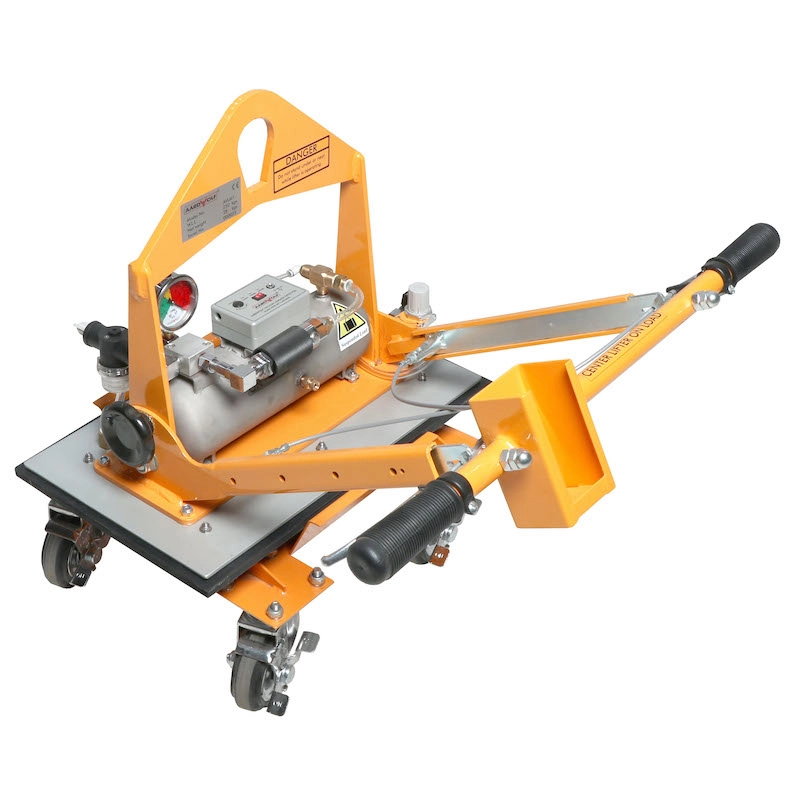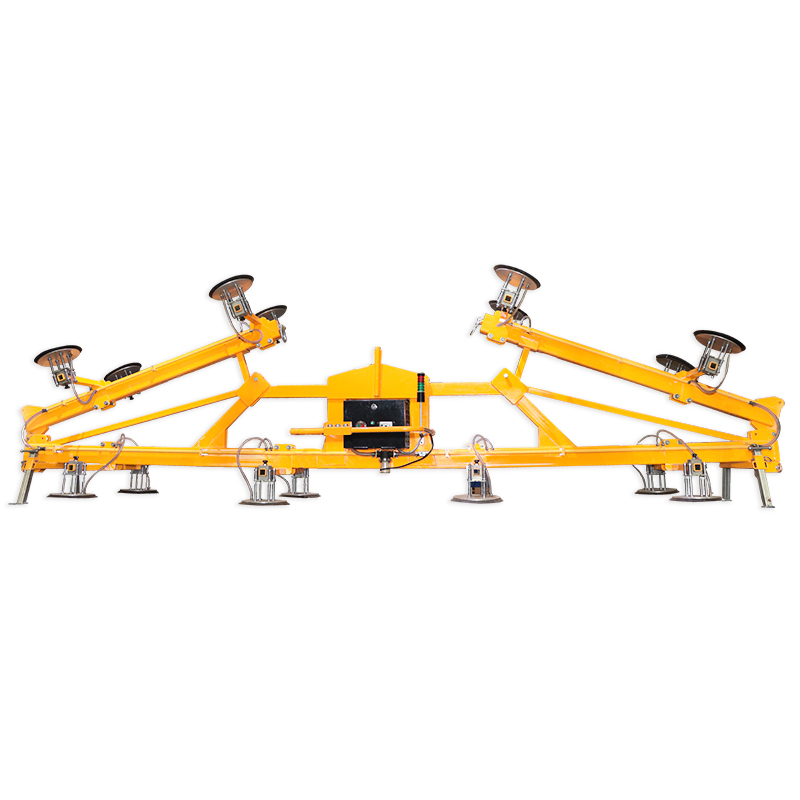In today’s fast-paced industrial environments, material handling efficiency and safety are top priorities. Whether in a stone fabrication facility, a glass workshop, or a construction site, lifting and transporting heavy, delicate, or bulky materials is a daily necessity. When done manually, these tasks can pose serious risks to both workers and materials. That’s where material handling equipment vacuum lifters come in.
This article explores how a vacuum lifter improves workplace safety and productivity, with insights built on real-world experience, proven expertise, industry authoritativeness, and operational trustworthiness—aligned with modern E-E-A-T (Experience, Expertise, Authoritativeness, Trustworthiness) SEO standards.

👉 What Is Material Handling?
👉 What Does Material Handling Mean?
Table of Contents
ToggleWhat Is a Vacuum Lifter in Material Handling?
A vacuum lifter is a motorized material handling device designed to lift and move smooth, non-porous materials such as glass sheets, metal plates, or polished stone slabs. Using vacuum suction technology, these devices eliminate the need for physical gripping or clamping. They can be mounted on jib cranes, hoists, or forklifts to support precise and safe lifting applications.
👉 What Is a Material Handling Equipment Vacuum Lifter?
👉 Vacuum Lifters
Why Workplace Safety Is Compromised Without Vacuum Lifters
Manual lifting tools—such as wheelbarrows, pallets, and carts—were never designed to handle large or fragile materials like granite slabs or glass panels. Common safety issues include:
- Strains, sprains, and back injuries from repetitive lifting
- Dropped materials resulting in damaged products or injuries
- Unstable handling due to uneven weight distribution
- Inconsistent placement, increasing waste and downtime
👉 Which Is an Example of Manual Material Handling Equipment?
👉 Which of the Following Is Manual Material Handling?
Vacuum Lifters and Workplace Safety: An E-E-A-T Perspective
✅ Experience
Leading manufacturers like Aardwolf have supplied vacuum lifting solutions across the globe for over two decades. From European marble shops to Southeast Asian glass factories, their systems are field-tested under real-world conditions.
✅ Expertise
Vacuum lifters are engineered by industrial experts specializing in ergonomic safety, load dynamics, and suction control. Operators are trained to perform precise lifts with minimal risk.
✅ Authoritativeness
Adopted by thousands of industrial plants and endorsed by safety managers and insurance assessors, vacuum lifters are now considered a standard in high-risk material handling operations.
✅ Trustworthiness
With built-in safety mechanisms—including backup vacuum tanks, low-pressure alarms, and emergency stop features—vacuum lifters significantly reduce operational hazards.
👉 When Handling Hazardous Materials, You Should?
7 Ways Vacuum Lifters Improve Workplace Safety
- Eliminate Manual Lifting Risks
No more bending, twisting, or straining—vacuum lifters handle the weight. - Enhance Load Stability
Secure suction prevents slipping or shifting during lifts. - Reduce Accidents
Less direct contact means fewer pinch points, dropped loads, or tipping hazards. - Improve Visibility
Operators can control the load from a distance with full visibility of the path. - Enable One-Person Operations
Reduces crowding around the load, lowering collision or entrapment risks. - Comply with Safety Standards
Vacuum lifters often meet or exceed OSHA, CE, and ISO standards. - Improve Morale and Reduce Downtime
Safer equipment leads to fewer injuries, happier teams, and lower absenteeism.
How Vacuum Lifters Boost Productivity
✔ Fast Lifting, Every Time
Whether you’re lifting a 300 kg granite slab or a 2-meter glass panel, a vacuum lifter gets the job done in seconds—every time.
✔ Accurate Load Placement
Perfect alignment minimizes rework and accelerates installation, especially in construction site logistics.
✔ One Operator, Full Control
With remote or handle controls, one operator can safely manage the entire process without relying on assistants.
👉 Why Is Material Handling Equipment Vacuum Lifter Considered More Efficient Than Manual Lifter?
✔ Integration with Other Systems
Vacuum lifters work seamlessly with:
- ✅ Jib Cranes
- ✅ Forklifts for construction
- ✅ Conveyor belts in automated systems
- ✅ Gantry cranes and hoists
Impact on Broader Operational Goals
| Goal | How Vacuum Lifters Help |
|---|---|
| Improve safety on construction site | Prevent injuries from lifting slabs or panels |
| Increase construction productivity | Speed up handling and reduce idle time |
| Minimize material waste | Avoid chipping, cracking, or scratching sensitive surfaces |
| Reduce labor cost in construction | One person replaces two or three manual handlers |
| Enhance material storage solutions | Stack and organize slabs efficiently without damage |
👉 Material handling Equipment
👉 What Is Material Handling Equipment
Who Should Operate Vacuum Lifters?
Vacuum lifters must be handled by trained personnel with mechanical and safety knowledge. Ideal operators include:
- Trained crane or forklift operators
- Certified material handling technicians
- Workers trained in suction-based lifting systems
👉 Which of the Following Is a Motorized Material Handling Device?
When Should You Invest in a Vacuum Lifter?
- ✅ You’re experiencing frequent injuries or downtime
- ✅ You handle heavy, flat, or fragile materials daily
- ✅ Your productivity is bottlenecked by slow manual lifting
- ✅ You want to improve ROI through automation
👉 When Should Invest in a Material Handling Equipment Vacuum Lifter?
Final Thoughts
So, how can a material handling equipment vacuum lifter improve workplace safety and productivity?
By minimizing physical strain, ensuring load control, accelerating workflows, and reducing costly material damage, vacuum lifters have become a vital part of the modern production ecosystem.
Whether paired with Aardwolf Slab Lifters for specialized stone lifting or integrated into smart conveyors in construction, they help teams work smarter, safer, and faster.

















Please log in to leave a comment.